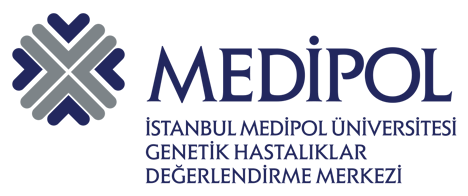Rare Diseases Day
The last day of February is celebrated worldwide as Rare Disease Day. Today aims to draw attention to the problems of individuals with rare diseases and their families. These problems are the limited diagnostic possibilities and the inability to apply disease-specific treatments for various reasons (1).
Rare diseases include a group of diseases with a frequency of less than 1/2000 in the population (2). Many rare diseases are severe, chronic, and life-threatening (3-4). There are 400 million people worldwide who suffer from about 7000 different rare diseases (5). 80% of these diseases are genetic, and more than 50% are children (6-10). Rare diseases are seen in 1 out of every 16 people in Turkey; 5 million people in Turkey and 350 million people worldwide have a rare disease (11).
According to effective treatment options, rare diseases can be classified as fatal, severe but non-fatal, non-severe but manageable (12). Only 5% of rare diseases have a cure. Accurate diagnosis of rare diseases is necessary for specific care and treatment and conscious family planning. In addition, early diagnosis will reduce the risk of death in individuals with rare diseases. Survival after diagnosis was determined as 97.3%, 88.8%, and 80.8%, respectively, according to 1, 5, and 10-year estimates (13). Next-Generation Sequencing (NGS) (next-generation sequencing) technologies have led to revolutionary developments that give hope to patients because they provide high diagnosis rates in the early stages of life. (11th).
People with rare diseases; need special care and treatment methods, drugs, consumables, special foods, and medical devices (14). Undoubtedly, the solution to these problems is only possible if the states constantly review their health policies in this sense.
References:
1. Rare disease day. [cited Jan 21]. Available from: https://www.rarediseaseday.org/
» https://www.rarediseaseday.org/
2. Mukherjee K. Care for Rare: Spotlight on Rare Diseases. Trends in Pharmacological Sciences. Volume 40, Issue 4, April 2019, Pages 227-228
3. Taruscio D, Floridia G, Salvatore M, Groft SC, Gahl WA. Undiagnosed diseases: Italy-US collaboration and international efforts to tackle Rare and common diseases lacking a diagnosis. Adv Exp Med Biol. 2017;1031:25–38. doi: 10.1007/978-3-319-67144-4_2. [PubMed] [CrossRef] [Google Scholar]
4. Evans WR, Rafi I. Rare diseases in general practice: recognising the zebras among the horses. Br J Gen Pract. 2016;66:550–551. doi: 10.3399/bjgp16X687625. [PMC free article] [PubMed] [CrossRef] [Google Scholar]
5. Dünya Sağlık Örgütü . Öncelikli hastalıklar ve dahil edilme nedenleri. 2013. [ Google Akademik ]
6. pGuillem P, Cans C, Robert-Gnansia E, Aymé S, Jouk P. Rare diseases in disabled children: an epidemiological survey. Arch Dis Child. 2008;2:115–118. doi: 10.1136/adc.2006.104455. [PubMed] [CrossRef] [Google Scholar]
7. Zurynski Y, Frith K, Leonard K, Elliot E. Rare childhood diseases: how should we respond? Arch Dis Child. 2008;93:1071–1074. doi: 10.1136/adc.2007.134940. [PubMed] [CrossRef] [Google Scholar]
8. Denis A, Mergaert L, Fostier C, Cleemput l SC. A comparative study of European rare disease and orphan drug markets. Health Policy. 2010;97:173–179. doi: 10.1016/j.healthpol.2010.05.017. [PubMed] [CrossRef] [Google Scholar]
9. Griffon N, Schuers M, Dhombres F, Merabti T, Kerdelhue G, Rollin L, et al. Searching for rare diseases in PubMed: a blind comparison of Orphanet expert query and query based on terminological knowledge. BMC Med Inform Decis Mak. 2016;16:101. doi: 10.1186/s12911-016-0333-0. [PMC free article] [PubMed] [CrossRef] [Google Scholar]
10. Rare Disease UK. What is a Rare Disease. 2018. [Google Scholar]
11. nadir_hastaliklar_raporu.pdf (tuseb.gov.tr)
12. Pogue RE, Cavalcanti DP. Rare genetic diseases: update on diagnosis, treatment and online resources. Drug Discovery Today. Volume 23, Issue 1, January 2018, Pages 187-195
13. Gorini F, Coi A, Mezzasalma L, Baldacci S, Pierini A, Santoro. Survival of patients with rare diseases: a population-based study in Tuscany (Italy). Gorini et al. Orphanet J Rare Dis (2021) 16:275
14. Unmet Medical Device Needs for Patients with Rare Diseases (fda.gov)

